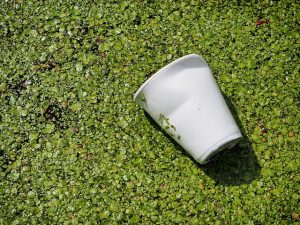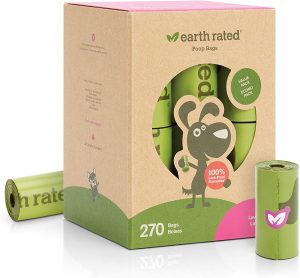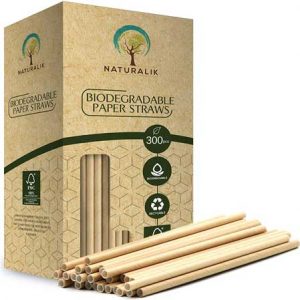Everything You Need To Know About Biodegradability
Would you like to live a more eco-friendly life that supports the environment, instead of contributing to its slow demise? You should start this incredibly important, fascinating and, why not, revolutionary journey by first learning the answer to the question “What does biodegradable mean?”
In spite of the generous public exposure of biodegradable products in recent years, there are still lots of people who do not know what the difference is between biodegradable and compostable or what it truly means for a product or packaging to be biodegradable.
We aim to shed the light on this important topic and eradicate all the confusion surrounding it. Without further ado, let us find out what it means for something to be biodegradable and how it can affect the well-being of our planet, as well as ours and our family’s health in the long term.
What Does Biodegradable Mean?
Shortly put, a biodegradable product is something that, provided the right conditions are met and when accompanied by specific bacteria and various microorganism, can eventually blend back in with the nature. Biodegradable materials are, therefore, materials that are decomposed by natural microorganisms and which will not pollute the environment.
What Is Biodegradable Waste?
Biodegradable waste refers to waste materials that are decomposed by something that is naturally found or occurring in the nature, such as fungi, bacteria, and other types of germs microbes, along with abiotic factors such as oxygen, temperature, or ultraviolet rays. This type of waste usually originates from either plants or animals that can be decomposed by organisms that are alive and it is usually identified in solid waste in the form of paper and food waste, manure, green waste, and plastic that is biodegradable.
How Does The Decomposing Process Occur?

Both the biotic and the abiotic elements mentioned earlier contribute to the breaking down of substances that have several complex components in their composition into simple organic matter. The organic matter has the ability to turn into suspended particles and slowly fade into the earth. This is a 100% natural process that is completed at various speeds, depending on the components of the items.
Another important thing worth mentioning here is the fact that the risks and problems related to the environment in relation to biodegradable waste are very low, thus so many people’s interest to live a more eco-friendly lifestyle and use more biodegradable items.
The decomposing process of a biodegradable item occurs gradually and naturally, with a slower or faster breaking down time, depending on the item. Keep in mind that, while most of the times the basic substances will degrade without releasing any toxins into nature and causing any damage to the soil and air, there are also plenty of exceptions. This is why it is crucial to know how to make the difference between a 100% safe biodegradable product and a product that will actually harm the environment to some extent during its decomposing stages.
One good example of a product that is fully biodegradable and safe for the environment is one made from plants. For the most part, such an items will break down into simple and non-harmful natural elements water like water, carbon dioxide and minerals. These components will slowly blend in back into the soil, without leaving behind any traceable toxic substances.
Steer Clear from Fake Advertising
When speaking about the most important characteristics and benefits of biodegradable products in relation to their effect on the environment, their ability to break down extremely fast without taking years in a row to go back into nature in a non-harmful way is by far essential. The fact that the best biodegradable materials can do that contributes greatly toward saving the landfills of the planet. On the downside, there is still plenty of fake advertising out there that is trying to sell some items or materials as “biodegradable” when they do not, in fact, meet all the necessary criteria, nor are they able to pass all the tests and prove their environmentally sustainable character.
Provided you are interested in embracing a green lifestyle and you are particularly attracted by eco-friendly gardening as a hobby or as a way of living a healthier and more eco-sustainable life, you should always make sure that the materials you will buy and use have undergone rigorous testing and they are, in fact, entirely safe and 100% biodegradable. Do you feel like you need some more insight into this topic? Let us dig a little deeper!
Know How to Recognize Biodegradable Materials
The biodegradable character of some materials is a lot easier to notice compared to other items. We can mention here something as common as food
leftovers or wooden toys that have not undergone any chemicals treatments meant to help them withstand rot or pests. These are 100% biodegradable and safe to use. For instance, the majority of vegetables will decompose in a time frame ranging from five days up to one month, with apple cores and banana peels taking more than a month and the peel of an orange taking more than six months.
Paper also belongs to the same category of biodegradable materials that decompose rather easily, as it only takes it somewhere between two and six weeks to decompose in a landfill. Pistachio shells, on the other had, could take as much as three years and sometimes more to completely decompose.
Unfortunately, there are plenty of other products that will only completely decompose at the end of a long cycle that will take several years, such as items made of steel and plastic. However even something as apparently simple as a milk carton could take up to five years to decompose, because it is made of paperboard, insulating layers consisting of polyethylene plastic and special aluminium.
Biodegradable Materials, the Healthy Alternative Non-Biodegradable Products
Using common sense, it is easy to deduct that non-biodegradable materials consist of those substances that cannot be broken down similarly to materials that are naturally decomposed with the help of natural microorganisms. Unfortunately, these materials are responsible for severely polluting the planet and their handling is a lot more difficult.
Usually, waste that is not biodegradable will stay on the earth for hundreds to thousands of years without degrading or decomposing. Items made from plastic are a common presence in pretty much any industry. Plus, metals, cans and chemicals used in agriculture and various industries are the main culprits for the pollution of the water, air and soil, as well as the triggering of various forms of cancers.
Waste that is not biodegradable and not environmentally-friendly should be replaced. Scientists have created alternatives to the harmful plastics in the form of biodegradable plastics and they have also mixed materials that are biodegradable with harmful plastics and turned them into items that ca decompose a lot faster. Nonetheless, the process is a very costly one.
When determining which items to buy and use, it is imperative to always consider the specific conditions that will work as catalysts for the decomposing process. Materials that are likely to biodegrade in compost heaps at home or out in the nature may not, unfortunately, decompose in a landfill where they will not find not enough fungi, bacteria, water, or natural light needed to trigger and support the process.
What Is the Difference Between Biodegradable And Compostable
There are plenty of companies that manufacture packaging labelled as “biodegradable” and also lots of manufacturers of products that label their products as “organic” and “biodegradable”. However, not all that glitters is gold. As mentioned before and unfortunately, in reality, there are still lots of false claims in this department. You will often times come across products that are not, in fact, biodegradable or at least not to the extent they are advertised. There are also products that are labelled as being “compostable” out on the market. What does compostable mean and what is the difference between biodegradable and compostable? Let’s find out!
For starters, you should know that a compostable product is a 100% biodegradable one. However, a compostable product is also manufactured in such a way so that can be used in the composting environment. When the right conditions are met, a compostable product will break down even faster, normally in less than three months’ time. Another important characteristic of a compostable product is the fact that it will leave behind humus, which is a material that contains lots of nutrients and is responsible for creating a nurturing environment in the soil, so that plants can growth in peace.

When a product is presented as being compostable or just biodegradable, it should be put in an environment that can smoothen the process of breaking down into its original components. Accordingly, a compostable product needs a composting environment in order to degrade. Plus, there are also certain biodegradable materials that should be decomposed in facilities that focus on composting. The respective facilities should be able to meet certain conditions, such as keeping these materials at a temperature of 140 degrees Fahrenheit for ten days without interruption.
PLA is a popular example of a biodegradable material that normally decomposes into water and carbon dioxide when it is placed in a composting environment. However, it will fail to decompose the same way when placed in a composting arrangement in your yard. Each compostable materials has its own set of standards and environment requirements that are developed by the Biodegradable Products Institute.
Keep in mind that certain parts of the world tend to be stricter when it comes to regulations companies that are making various environmental claims. For instance, if you live in California, you may want to know that the state displays clear warnings on those products that have been identified as responsible for causing birth defects, cancer, and other forms of reproductive harm. As for the claims regarding biodegradable products, California limits the use of some terms. The state does not allow the selling of plastic items, or products that are sold in packaging made of plastic also have labels that read “biodegradable/marine degradable/decomposable” or an alternative form of these words.
The state has also forbidden the selling of plastic products that are labelled as “home compostable” except for the fact when their manufacturers can display proof of Vincotte OK Compost HOME certification. California has also taken a serious stand against misleading terms used for advertising, including “environmentally friendly” in relation to products made of or packed in plastic.
No matter if you are interested in starting your own home harden and you wish to use 100% biodegradable products that are free from toxins or you would like to live a more environmentally-sustainable life and be more aware of all your purchases, focus on investing in biodegradable, eco-friendly products and packaging to get started on the right foot.
FAQ
Biodegradable materials are those materials that are decomposed naturally with the help of biotic and abiotic factors such as natural light from the sun, bacteria, or fungi, when the right conditions are met. The process is a non-polluting one.
Non-biodegradable materials are made of substances that cannot be broken down similarly to materials that are naturally decomposed with the help of natural microorganisms. They are usually responsible for severely polluting the planet and their handling is a lot more difficult, as they can remain grounded on the soil for as much as thousands of years.
Compostable products are entirely biodegradable and they are also manufactured in a way that allows them to be used in a composting environment. When the right conditions are met, a compostable product will break down even faster, normally in less than three months’ time. Another important characteristic of a compostable product is the fact that it will leave behind humus, which is a material that contains lots of nutrients and is responsible for creating a nurturing environment in the soil, so that plants can growth in peace.
When a product is presented as being compostable or just biodegradable, it should be put in an environment that can smoothen the process of breaking down into its original components. Accordingly, a compostable product needs a composting environment in order to degrade. Plus, there are also certain biodegradable materials that should be decomposed in facilities 140 degrees Fahrenheit temperatures, where they should remain for ten days without interruption.
Manor, food leftovers or wooden items that have not undergone any chemicals treatments meant to help them withstand rot or pests are usually 100% biodegradable and safe to use. For instance, the majority of vegetables decompose in five days up to one month, while apple cores and banana peels will take more than a month. Orange peel decomposes in more than six months. Paper only takes somewhere between two and six weeks to decompose in a landfill. Pistachio shells can take as much as three years and sometimes more to completely decompose.
The risks associate with the naturally occurring process of decomposing are very low compared to non-biodegradable items. When speaking about the most important characteristics and benefits of biodegradable products in relation to their effect on the environment, their ability to break down extremely fast without taking years in a row to go back into nature in a non-harmful way is by far essential. The fact that the best biodegradable materials can do that contributes greatly toward saving the landfills of the planet.


![Paper-Drinking-Straws-[200-Pack]-100%-Biodegradable---Assorted-Colors](https://www.eco-friendly.website/wp-content/uploads/2021/05/Paper-Drinking-Straws-200-Pack-100-Biodegradable-Assorted-Colors-300x267.jpg)

